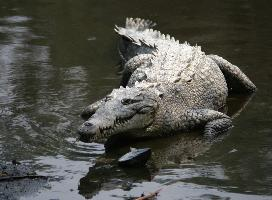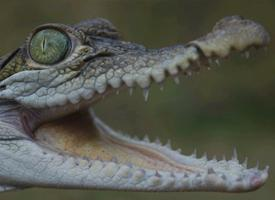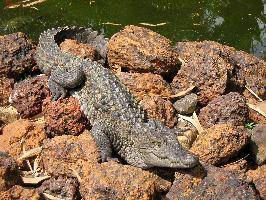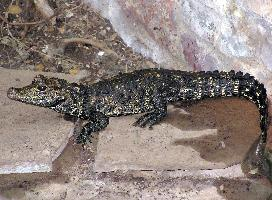
State of endangerment
| Endangered |
Animal description
The Dwarf Crocodile (Osteolaemis tetraspis), also known as the African Dwarf Crocodile, Broad-Snouted Crocodile, or Bony Crocodile, is a small species of crocodile native to the rainforests and swamps of Sub-Saharan Africa. This fascinating reptile is the smallest member of the crocodilian family, which includes other crocodiles, alligators, caimans, and the gharial. Despite its diminutive size, the Dwarf Crocodile possesses a remarkable set of adaptations and characteristics that make it a fascinating subject of study.Physical Characteristics:
The Dwarf Crocodile typically measures between 1.5 to 1.9 meters in length, with males generally being larger than females. Its body is robust and covered in thick, bony scales known as scutes, which provide protection against predators and environmental hazards. The scales on its back are particularly pronounced, forming a rugged armor. Its coloration is dark, usually a deep, murky green or brown, which helps it blend seamlessly into the shadowy waters and dense vegetation of its habitat. The crocodile's snout is broad and short, equipped with sharp teeth capable of grasping and holding onto prey.
Habitat and Distribution:
Dwarf Crocodiles are primarily found in the lowland tropical forests of West and Central Africa. They prefer slow-moving bodies of water such as swamps, marshes, and the dense, vegetated areas along rivers and streams. These habitats provide the crocodiles with ample cover and a rich source of food. They are adept swimmers but spend a considerable amount of time on land, especially during the night when they hunt.
Behavior and Diet:
Dwarf Crocodiles are nocturnal animals, spending the daylight hours resting in burrows or under dense vegetation, emerging at night to hunt. Their diet mainly consists of small vertebrates, including fish, amphibians, and small mammals, as well as crustaceans and insects. They are ambush predators, relying on stealth and patience to capture their prey.
Reproduction:
Dwarf Crocodiles are solitary creatures, coming together only during the breeding season. The female lays a clutch of about 10 eggs in a nest made of vegetation, which she guards diligently until they hatch. The incubation period is about 90 to 100 days, after which the young crocodiles emerge. The hatchlings are precocial, able to fend for themselves almost immediately, but they often stay close to their mother for protection against predators.
Conservation Status:
The Dwarf Crocodile is classified as Vulnerable by the International Union for Conservation of Nature (IUCN). Its populations are threatened by habitat destruction due to deforestation, water pollution, and human encroachment. Additionally, they are hunted for their meat and skin, which is highly valued in local markets. Conservation efforts are underway in several regions to protect their natural habitats and regulate hunting to ensure the survival of this unique species.
In conclusion, the Dwarf Crocodile is a remarkable creature that plays a vital role in the ecosystems of Sub-Saharan Africa. Despite its small size, it is an efficient predator and an important part of the food chain. Protecting the Dwarf Crocodile and its habitat is crucial for maintaining the biodiversity and ecological balance of its native regions.
Map of occurrence
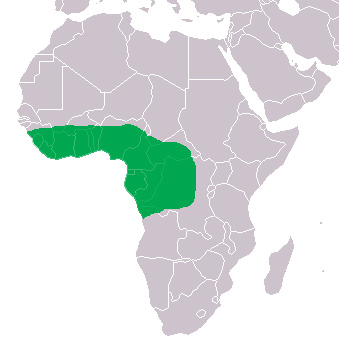
Similar Animals
New photos of animals
Top 10 animals
- Dolphin gull (Leucophaeus scoresbii)
- Diana monkey (Cercopithecus diana)
- Moustached guenon (Cercopithecus cephus)
- Greek tortoise (Testudo graeca)
- Stone loach (Barbatula barbatula)
- Galápagos tortoise (Geochelone nigra complex)
- Japanese macaque (Macaca fuscata)
- Russian tortoise (Testudo horsfieldii)
- Common flying dragon (Draco volans)
- Galápagos penguin (Spheniscus mendiculus)
